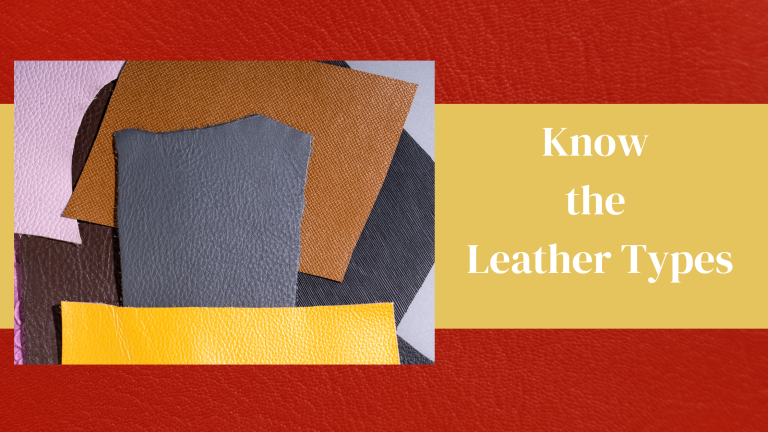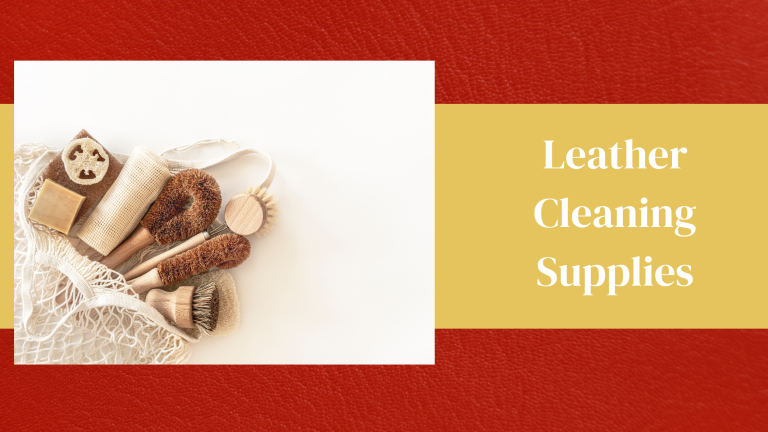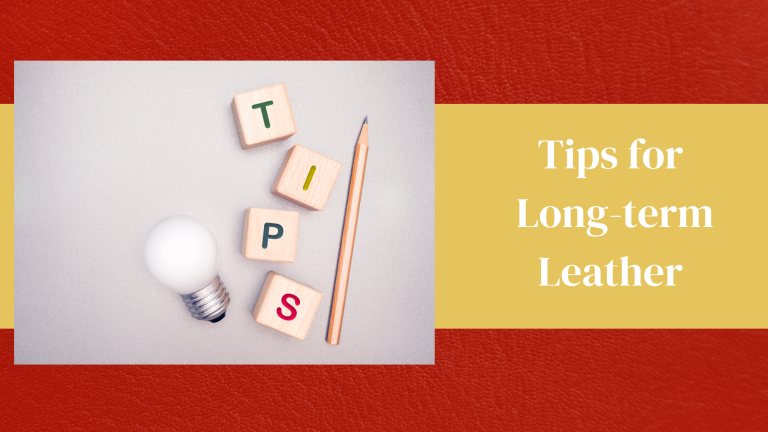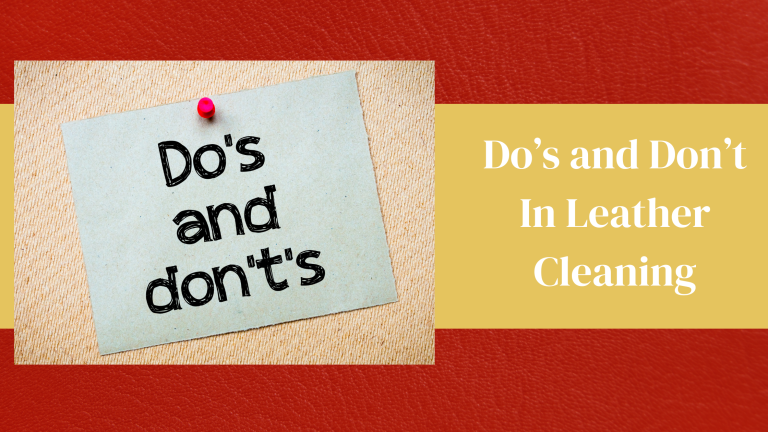Just like human beings, your leather also requires love and care.
No matter how durable your leather belt, shoes, or purse is, it requires specialized cleaning to retain its shape, strength, or appearance if you want your leather goods to last a long time.
Leather tends to dry out with time. There are different cleaning ways to protect your leather products from damage and maintain their soft and supple features.
But before you plan to clean your leather goods, it’s important to know different leather types, the basic cleaning supplies needed, and some general tips for cleaning leather. That’s not all you will learn in this blog.
We will also share how you can clean some specific leather items that require more attention, some quick maintenance tips to make your leather products last longer, and finally, dos and don’ts while you clean leather products.
So, let’s dive in to know more!

Understanding Leather Types
Leather goods are known for their durability and luxury, but to the untrained eye, the differences between various leather types might not be immediately obvious when shopping.
If this resonates with you, we’ve created a guide to help you identify and understand different types of leather:
1. Full-Grain Leather
These are extracted from the top layer of animal skin, which gives leather goods a unique texture. They are then tanned using available tanning methods to retain their original markings and grains.
Full-grain leather is known for its strength and durability, and it forms a patina over time, giving it a luxurious look.
These are used for making luxury bags, shoes, car upholstery, furniture, wallets, and belts.
2. Top-Grain Leather
Top-grain leather is made from the layer below the full-grain leather and retains some texture and natural grain of animal skin. These leathers are thinner than full-grain leather and are sanded to achieve a smooth surface.
They are also known for their durability and strength features, but they are less likely to develop a patina like full-grain leather.
Fashion accessories, automobile interiors, sporting goods, and footwear are made from top-grain leather.
3. Bonded Leather
Bonded leather is made from leather scraps and fibers that are bonded together with adhesives and then coated with a synthetic layer. They are cost-effective alternatives to genuine leather and have comparatively lower quality and durability features.
Bonded leather is used for making furniture, accessories, book covers, upholstery, and travel bags.
Importance of knowing your leather type before cleaning
Different leathers have varied levels of durability, texture, and sensitivity to leather cleaners. Thus, it’s essential to know your leather goods type before cleaning them.
1. Appropriate Cleaning Methods:
Each type of leather has specific cleaning requirements, and the wrong cleaning products can damage your leather quality and appearance.
For example, cleaning bonded leather with products made to clean full-grain leather may damage the material.
2. Maintaining Aesthetics:
Each leather has a unique appearance and finish, which makes it important for you to choose the right products to clean leather.
For instance, full-grain leather develops a patina over time, and cleaning it with top-grainer leather cleaner may damage its appearance and patina.
3. Longevity and Value:
Proper care as per leather type can significantly extend the life of your leather goods and maintain their value. Clean your leather regularly and appropriately to retain its strength, shine, and durability.

Basic Cleaning Supplies Needed
No matter if you’re a new or experienced leather user, these must-have cleaning supplies are essential to maintaining the quality and longevity of your leather goods.
1. Soft Cloths
Soft cloths are made from microfiber material and are gentle on leather goods. Use these cloths for cleaning leather as they wipe away dust, dirt, and spills without damaging the leather surface.
2. Leather Cleaner
Unlike general household cleaners, leather cleaner is specially designed to clean leather surfaces without damaging them. They usually contain pH-balanced formulas that effectively remove dirt, grime, and stains and prevent the natural oils of leather strip away.
3. Leather Conditioner
Leather conditioner moisturizes and nourishes the leather, keeping the surface soft and supple. Frequently apply conditioner to your leather goods to protect them from cracks and stiffness and to restore their natural oils.
4. Leather Brush
A leather brush has soft bristles that gently brush leather surfaces to remove dust, dirt, and debris. You can use these brushes to clean your leather furniture and shoes to remove dirt that gets embedded in the grain.
5. Spot Cleaner
Spot cleaner contains a specialized formula to tackle specific stains or spots on leather, which regular cleaners might not clean effectively. They efficiently clean stains such as ink and grease without damaging the leather.
General Cleaning Tips for Leather Goods
Leather goods are durable and provide a luxurious feel. They require proper care and regular cleaning to maintain their beauty, shine, and longevity.
Here, we have provided a step-by-step guide on general leather cleaning:
· Dusting off dirt and debris
Use a soft, dry cloth or a dusting brush to remove loose dirt and debris from the leather surface. Use a vacuum cleaner for cleaning leather sofas or chairs, and gently stroke through the brush attached to the vacuum cleaner to avoid scratching the leather surface.
· Use a damp cloth for light cleaning.
A damp cloth removes minor spots or surface dirt from the leather goods. Use a lightly dampened cloth and gently wipe the affected areas. After wiping the area, use a dry cloth to remove the excess moisture from the leather and then let it air dry. Avoid the use of heat dryers to speed up the drying process, as it could damage the leather surface.
- Applying leather cleaner properly
Choose the right leather cleaner for the type of leather you want to clean. Apply a small amount of leather cleaner to a microfiber cloth and gently rub on the leather goods in a circular motion to ensure the cleaner is evenly spread on the leather. After cleaning the leather, remove excess cleaner with a separate cloth and let the leather dry completely before proceeding to the next steps.
- Conditioning the Leather
Conditioning is important to maintain the soft and supple look of the leather. Select a conditioner as per your leather type and pour a small amount of it on a soft cloth. Gently rub the cloth on the leather in a circular motion after cleaning the leather. Let the conditioner sit on the leather for a few hours. Once the leather absorbs the conditioner, use a dry cloth to remove any excess conditioner from the leather.
Tips on how often to clean your leather items
- Use a soft cloth to dust away the dirt and debris from your leather goods like furniture and car interiors every week.
- Spot clean the spills and stains as they occur because the longer they sit on the leather, the longer it will take to remove them.
- Deep clean your leather products every 3–6 months, depending on the usage.
- Condition your leather every 6–12 months to prevent it from drying out or losing its natural oils.
- Leather can react to changes in climate. Check your leather goods condition more frequently during extreme weather conditions and adjust your cleaning strategy.
Cleaning Specific Leather Items
Each leather item is unique and requires personalized care to maintain its distinct beauty and longevity.
Methods to Clean Leather Bags and Accessories
- Use a soft, dry cloth or dusting brush to remove dirt and debris from your leather bags, belts, or wallets.
- Gently wipe the leather with a slightly damp cloth. Avoid overwetting the leather, as excess moisture can damage the surface.
- Choose an appropriate leather cleaner to remove tough stains from leather goods like handbags and wallets.
- After cleaning the leather, apply a small amount of leather conditioner on a soft cloth and gently rub the cloth on the leather to evenly distribute the product.
Tips to Maintain the Shape and Quality of Leather Accessories
- Avoid overloading your leather bags and wallets with products to preserve their original shape.
- Protect the leather bags and accessories from heat and store them in a cool place.
Instructions for cleaning and polishing leather shoes
- Remove any loose dirt and debris from the shoes using a soft brush or a dry cloth.
- Use a slightly dampened cloth for light cleaning. In case your shoes are extremely dirty, you might need to use a leather cleaner.
- Gently apply the leather cleaner to your shoes using a soft cloth and let it air dry.
- Once your shoes are dry, apply leather polish or cream appropriate to your shoe color using a soft cloth or polishing brush. Allow it to dry on its own.
- After a few minutes, buff the shoes with a dry cloth to get the shiny leather surface.
Importance of using the right products to avoid damage
Choosing the right products to clean leather is crucial to avoid damage. Always use a leather cleaner and conditioner designed for specific leather types to effectively clean them without losing their shine, damaging their surface, or stripping away their natural oils. Avoid using harsh chemicals or household cleaners not intended for leather, as these can be too abrasive and may cause irreversible damage. Always do a patch test of the product on a small, inconspicuous area before applying it to the entire surface. Always use appropriate leather cleaning and conditioning products on your bags, accessories, and shoes to ensure they remain in excellent condition while retaining their natural oils and shine.

Tips for Long-term Leather Maintenance
In this section, we have shared some tips for long-term leather maintenance. But before that, you must know the importance of regular cleaning and conditioning of your leather goods:
Importance of Regular Cleaning and Conditioning
Leather is a natural material. Neglecting leather care can lead to drying, dullness, and brittleness, causing it to lose its original charm and resilience.
Use the right leather cleaning items to remove dust, dirt, and stains from the leather. Apply conditioner timely to replenish the natural oil that keeps the leather surface soft, supple, and shiny.
Storage tips to preserve leather quality
Use Proper Storage Solutions:
- Use soft, breathable covers or dust bags to store your leather bags, shoes, or accessories to protect them from dirt and dust.
- Use padded hangers for leather clothing like jackets to maintain its shape and avoid shoulder distortion.
Avoid Overloading:
- Avoid overloading storage bags, as it can cause deformation. Use padded inserts or crumpled paper to help the bag retain its shape.
Store in a Cool, Dry Place:
- Protect the leather goods from excessive heat or humidity and store them in a cool, dry environment to protect them from damage.
Properly Store Leather Shoes:
- Store shoes in a well-ventilated area, ideally in their original box or a dust bag, to keep them clean and dust-free.
How to Protect Leather from Environmental Damage
Leather goods are originally made from animal skin and hides and are sensitive to environmental factors like heat, humidity, and moisture. Here are the tips to protect your leather from environmental damage:
Protect from Sunlight:
Store leather items away from direct sunlight to protect them from fading their natural colors and drying out. Use UV-protective sprays specifically designed for leather goods if exposure is unavoidable.
Shield from moisture:
Leather is susceptible to water damage. In case of spills or wet conditions, blot the moisture immediately from the leather with a clean, dry cloth and allow it to air dry, away from heat sources.
Avoid Chemicals:
Keep leather away from harsh chemicals like cleaning agents and perfumes, which can damage the surface and affect the leather’s natural oils. Always test the new products on small, inconspicuous areas first to know the product compatibility with your leather goods.
Handle with Clean Hands:
Always handle leather items with clean hands, as oils and dirt from your hands can transfer to leather and cause stains or degradation. Avoid touching leather surfaces frequently to cease the transfer of dust, dirt, and grime from your bare hands.

Dos and Don’ts in Leather Cleaning
Proper leather care involves following specific guidelines to maintain its appearance and durability. Here’s a comprehensive list of dos and don’ts when cleaning leather items:
1. Do Condition Leather Regularly
Condition your leather goods every 6–12 months using a leather conditioner suitable for your leather type to replenish the natural oils that leather loses over time due to exposure to air, heat, and environmental factors. Regular conditioning keeps leather soft, supple, and flexible and prevents the leather surface from cracking or drying out.
2. Do Use pH-balanced Leather Cleaners
Leather is a delicate material that can be easily damaged if cleaned by harsh materials or products meant for cleaning leather. Always use pH-balanced cleaners specifically designed for leather to effectively clean out dirt, dust, and stains.
3. Do Test Cleaners on a Small Area First
Always test the product on a small area first by applying a small quantity of cleaner or conditioner to check for any adverse reactions, such as discoloration or damage, without affecting the entire piece. Let it sit for a few minutes, and then wipe it off to see how the leather reacts.
4. Don’t Scrub Aggressively
Avoid rubbing the leather aggressively, as it can damage the surface and remove natural oils. Always use a sponge or microfiber cloth to clean the leather surface. In case of stains, use a leather cleaner formulated for such issues and follow the recommended application method.
5. Don’t Expose Leather to Direct Sunlight
Exposure of leather to direct sunlight can cause tears, discoloration, or drying out of the leather surface. Store leather goods in a cool, shaded area, and use UV-protective sprays if necessary, especially if the items are often exposed to sunlight. For leather furniture, use curtains to limit their exposure to sunlight.
6. Don’t Neglect Regular Maintenance
Never neglect regular maintenance of your leather goods, as it can lead to dirt and grime buildup, making cleaning more difficult and causing long-term damage. Dust and spot-clean leather items regularly to prevent debris accumulation on a leather surface that can degrade the leather over time.
The Bottom Line
Leather goods are made from different layers of animal skin: full-grain leather (top layer of animal skin), top-grain leather (second highest layer of animal skin), and bonded leather (made from leather scraps and fibers). As there are different leather types, you must use the right cleaner and conditioner to clean leather. Always use a microfiber cloth and soft bristle brushes to remove dirt and grime accumulated on your leather. Further clean and condition the leather to retain its luster and natural oils. Never neglect cleaning your leather, as regular maintenance can effectively extend their lifespan. Thoroughly follow the steps and tips provided in this blog to clean your leather to ensure your leather goods stay in top condition.
